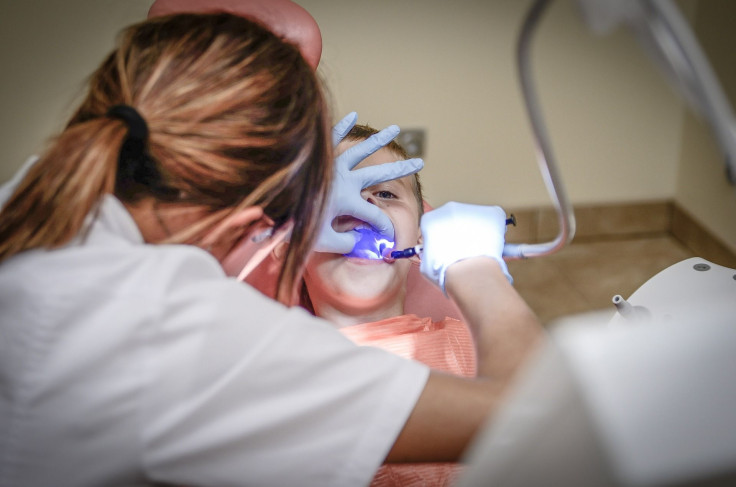Iontophoresis: Painless Electric Currents May Soon Replace Needles At The Dentist

“Just a little bug bite!” The dreaded words come out of your dentist’s mouth as he stabs your gum with a needle injecting novacane, the dental anesthetic. It always hurts more than a bug bite. Soon, your gums are numb, and you wince as sharp, shiny tools make their way into your mouth.
A visit to the dentist may be one of the most unpleasant experiences, and yes, even odontophobia — a fear of dentists — is a thing, and for good reason. But as medical technology progresses, so do the terrible tools of dentists. New research out of the University of São Paulo, Brazil, finds that dentist needles may soon be replaced entirely by simple electric currents, a painless way to deliver anesthesia.
The process, called iontophoresis, involves sending topical anesthetic hydrogels (which are normally placed onto the skin before a novacane needle is inserted) directly into the skin through the electric current. As the researchers explain, iontophoresis “is a strategy to increase the penetration of drugs through biological membranes.” This would bypass the need for a needle entirely, as the electric current renders the topical anesthetics more effective.
“Needle-free administration could save costs, improve patient compliance, facilitate application and decrease the risks of intoxication and contamination,” Professor Renata Fonseca Vianna Lopez, an author of the study, said in the press release. “This may facilitate access to more effective and safe dental treatments for thousands of people around the world.”
In the experiment involving a pig, the researchers first prepared the anesthetic hydrogels with a polymer, which allowed it to stick to the gums or inner mouth. Both anesthetic drugs — prilocaine hydrochloride (PCL) and lidocaine hydrochloride (LCL) — proved to be way more effective when delivered through the electric current, as it allowed the drugs to enter the body 12 times more quickly.
“Over the last few years, our research group has been working on the development of novel drug delivery systems for the treatment of several skin and eye diseases,” Lopez said in the press release. “The skin and eyes pose challenges for drug delivery, so we have focused on improving drug delivery in these organs using nanotechnology, iontophoresis and sonophoresis, which is permeation using sound waves.”
This isn’t the first study to try to improve dental procedures, as the cycles of current dental care, which involve drilling, filling, re-filling, and sometimes pulling, may not be sustainable in the future. Recently, researchers developed a new way to repair teeth — by “supercharging” the remineralization of tooth enamel instead of drilling and filling. Other new methods, such as the Electrically Accelerated and Enhanced Remineralization (EAER), aim to allow teeth to repair themselves by triggering calcium and phosphate minerals to re-enter teeth and begin a rebuilding process. Nanotechnology has played a large role in these self-repairing teeth ideas, but there’s still some way to go before many methods are considered safe in clinical practice.
Using the most recent study as a basis, Lopez and her colleagues plan to create a device that would be used specially in the dental setting, to deliver anesthetics through the mouth lining or gums. They hope that with more research, it will soon be tested in pre-clinical trials.
Source: Cubayachi C, Couto R, Gaitani C, Pedrazzi V, Freitas O, Lopez R. Needle-free buccal nesthesia using iontophoresis and amino amide salts combined in a mucoadhesive formulation. Colloids and Surfaces B: Biointerfaces, 2016.



























